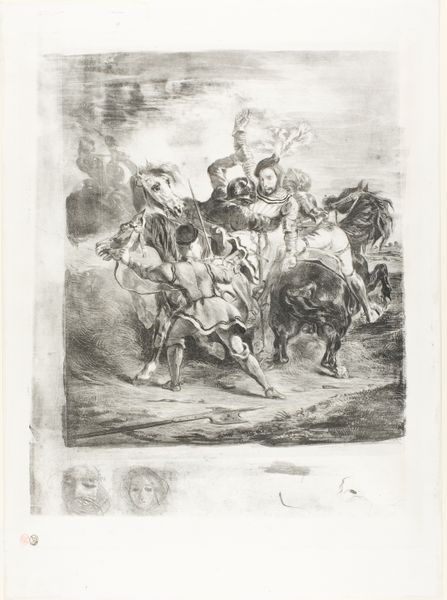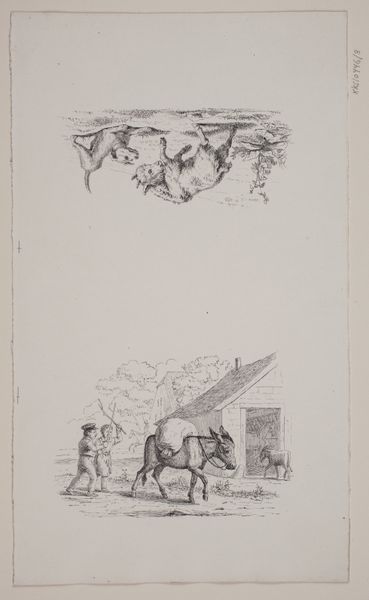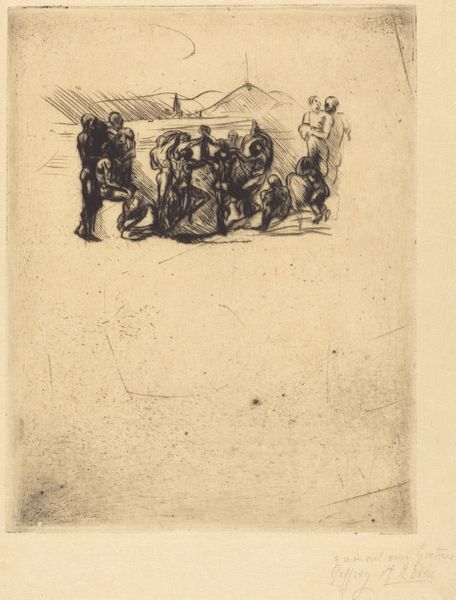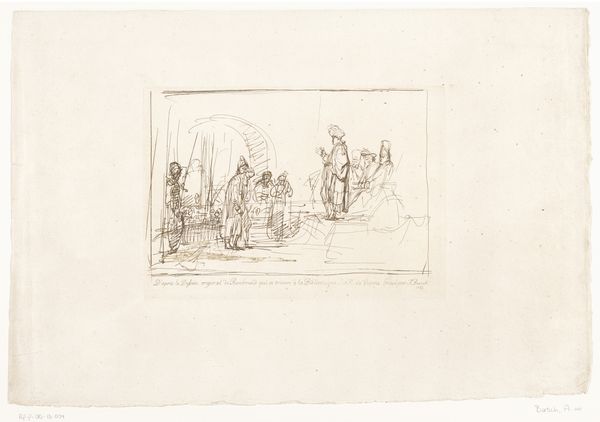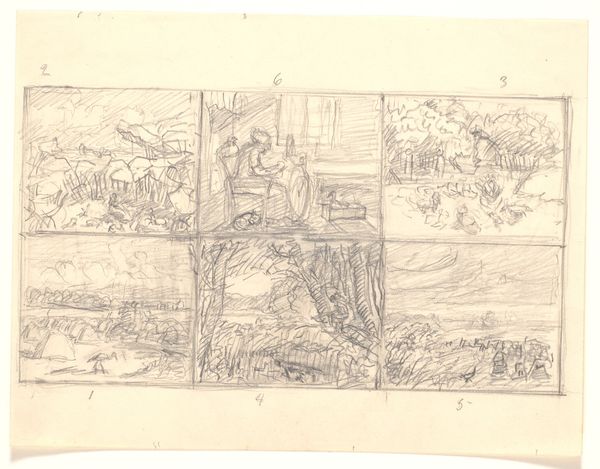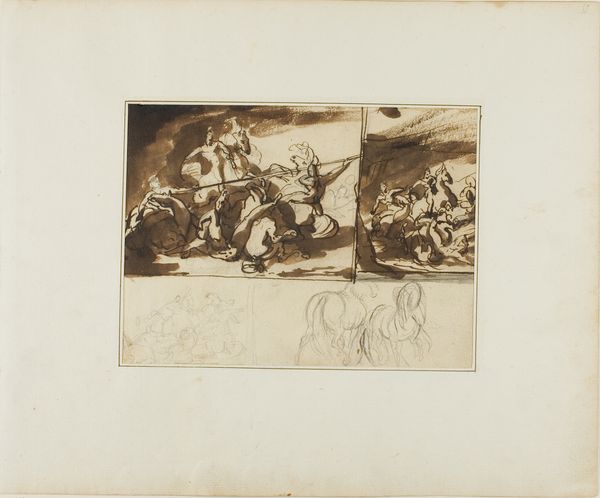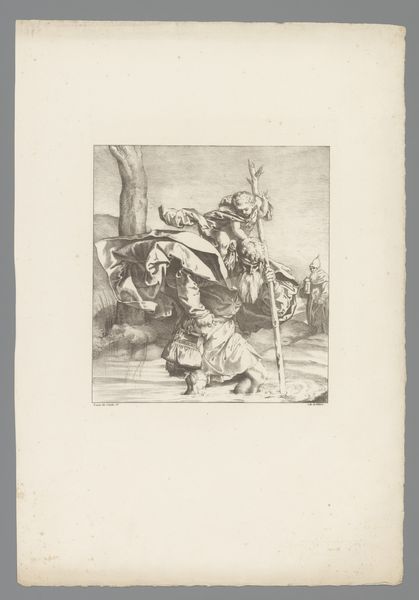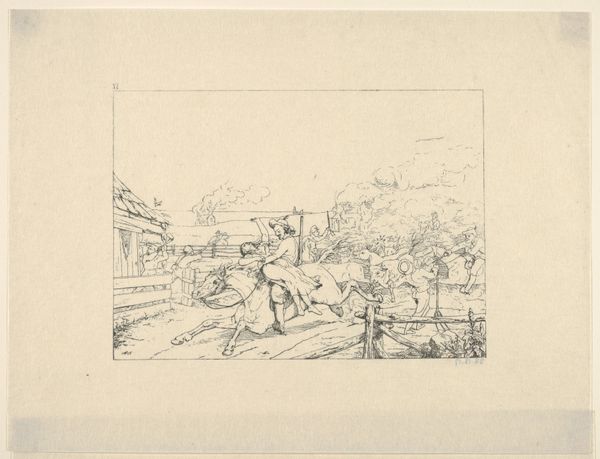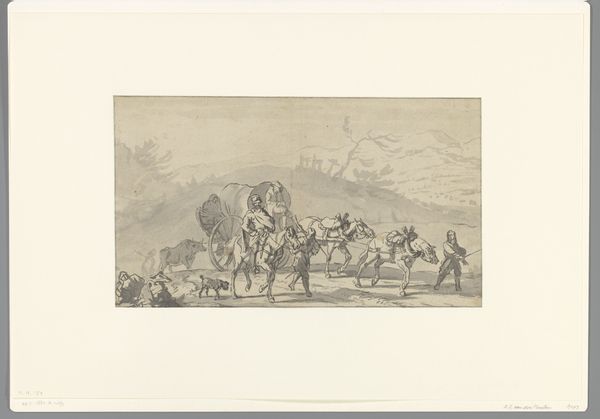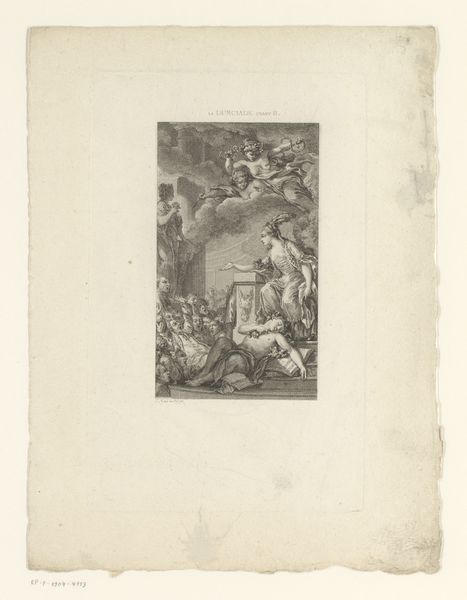
To illustrationsudkast til Sønderjyske Folkesagn, v. F.Ohrt. F.o. Hvor I mindst venter det og f.n. Kong Abel og rebslagerne 1919
0:00
0:00
drawing, ink
#
drawing
#
medieval
#
narrative-art
#
ink
#
ink drawing experimentation
Dimensions: 221 mm (height) x 185 mm (width) (bladmaal)
Curator: This compelling ink drawing, crafted in 1919 by Niels Skovgaard, offers two separate studies of folk legends, each exploring distinct narratives. Editor: My first impression is that this is quite a stark and shadowy work. The strong contrast in the lower panel emphasizes both depth and movement. The overall tonal value really grabs your attention. Curator: Indeed. These drawings relate to Skovgaard's larger commission illustrating South Jutlandic folk tales assembled by F. Ohrt, reflecting a surge of national romanticism in Denmark following World War I. The stories and imagery sought to bind communities through shared heritage, especially regarding the fraught politics involving the border between Denmark and Germany. Editor: The heavy lines used to create that lower composition lend it such dramatic weight, while in the top panel there's lightness and airiness in the barely-there pencil lines. It shows how simple changes can transform an image, as the artist captures and differentiates atmosphere and mood. It is as if the bottom drawing evokes raw conflict, a contrast to the upper composition's dreamlike quality. Curator: It is all tied to the historical sagas, you know. One of those depicted focuses on King Abel’s infamous end. There is the suggestion that Skovgaard wants the viewer to contemplate ideas around national identity and its legends, which are often used as symbols of shared history. Editor: Look at the economy of strokes and varied line work. There’s a tangible roughness and sense of volume created using dark shading alongside highlights which helps create that effect. This focus really pulls you into each distinct framed image. Curator: Exactly. The folk tales were meant to provide hope. And art, especially that commissioned and shown in museums, serves that function by connecting a broad public with that hope and shared identity. Editor: Reflecting on the artistic techniques and aesthetic properties of Skovgaard's ink drawing reminds us about the expressive power of lines and tone in telling a historical narrative. It offers such a layered depth and invites each viewer to really reflect upon these sagas of identity. Curator: Ultimately, this ink drawing offers a vivid window into a pivotal historical moment, when art actively helped define Danish cultural and national identity.
Comments
No comments
Be the first to comment and join the conversation on the ultimate creative platform.
